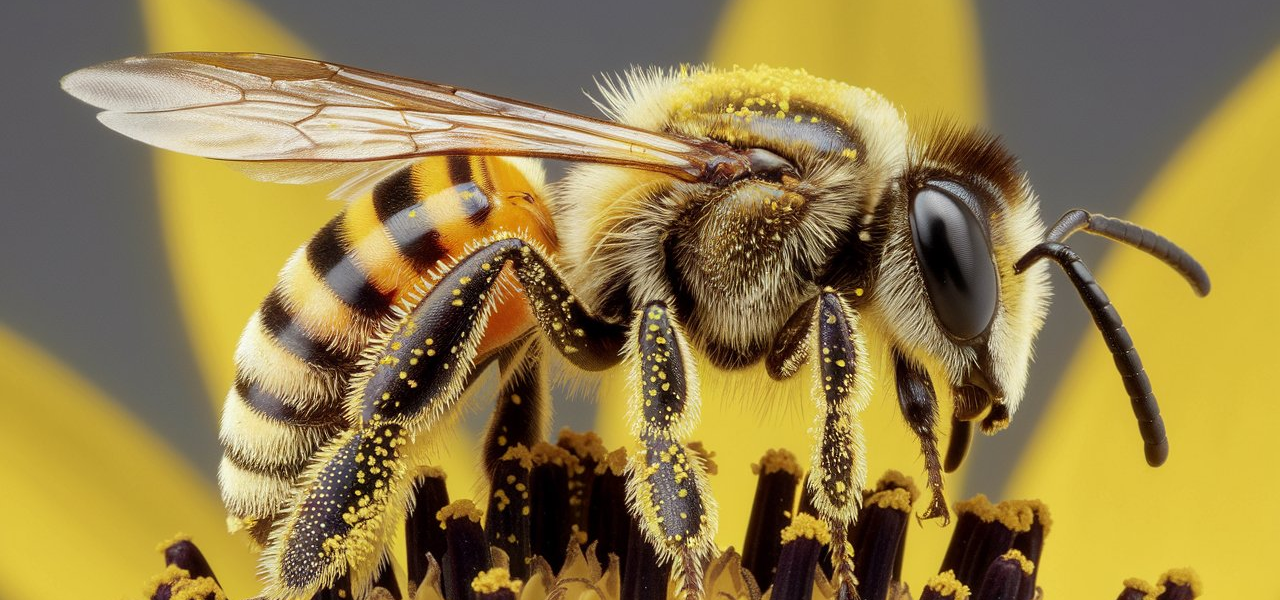Introduction
Bees are among nature’s most vital pollinators, and their role in maintaining ecosystems is precious. Among bees, the worker bee plays a pivotal role in preserving the hive, collecting meals, and nurturing the colony. Interestingly, a worker bee has a mass of 0.00011 ., which may additionally seem tiny; however, their collective impact is large. This article will explore the life of a worker bee, its significance to the atmosphere, and what makes those small creatures so powerful.
What Does It Mean When a worker bee has a mass of 0.00011 .?
It’s fascinating to remember that a worker bee has a mass of 0.00011 . grams. This reputedly insignificant variety is a testimony to how small but efficient these creatures are. With this low mass, worker bees are surprisingly agile and might tour long distances searching for nectar and pollen. Their lightweight bodies allow them to carry hundreds of pollen or nectar lower back to the hive without being weighed down.
The weight of a worker bee has a mass of 0.00011 . displays its adaptability and capacity to carry out obligations that contribute to the well-being of the colony. Despite their small length, they could travel as much as 5 miles in one journey, navigating diverse terrains and weather situations.
The Lifecycle of a Worker Bee
A worker bee has a mass of 0.00011 ., and its lifecycle is fascinating. Worker bees are woman bees that don’t reproduce. They emerge from their cells after approximately 21 days of development. Once they emerge, their duties inside the hive shift over time.
Days 1–3: After rising, young worker bees clean the hive and cells. During this level, their primary project is to ensure that the hive stays smooth and healthy.
Days 4–11: At this level, worker bees deal with the larvae, feeding them with pollen and honey.
Days 12–18: They begin to build the honeycomb and receive nectar from foraging bees.
Days 19 and onward: During their final stage of life, worker bees emerge as foragers, accumulating nectar and pollen to feed the colony.
Despite having a mass of 0.00011, worker bees contribute significantly to the hive throughout their lives. They work tirelessly, frequently flying lengthy distances, and subsequently shed their wings, which ultimately results in their death.
The Role of Worker Bees in Pollination
One of the most essential roles of a worker bee is pollination. As they pass from flower to flower, they transfer pollen, permitting flowers to breed. Despite a worker bee has a mass of 0.00011 ., its ability to contribute to the survival of limitless plant species and vegetation is enormous.
Bees pollinate approximately 75% of the arena’s flowering plants, including 35% of the world’s food plants. With the hard work of those tiny creatures, the various results, veggies, and nuts we depend on would be safe. The truth that a worker bee has a mass of 0 00011 doesn’t diminish its effect on worldwide agriculture and biodiversity.
The Collective Power of Worker Bees
Individually, a worker bee has a mass of 0.00011 .; however, its strength comes in numbers. A single worker bee would possibly best produce about 1/twelfth of a teaspoon of honey in its lifetime, but the colony’s collective effort produces substantial quantities of honey that maintain the hive throughout colder months. Thousands of worker bees work together, each contributing to the survival of the colony.
Their potential to talk through the “waggle dance” allows them to find food assets efficiently. Despite the fact that a worker bee has a mass of 0.00011 ., the coordination inside a hive is exceptional, showcasing the energy of collaboration and teamwork.
Environmental Challenges Facing Worker Bees
While a worker bee has a mass of 0.00011 ., it faces enormous challenges due to environmental factors. Habitat loss, pesticide use, and climate change are fundamental threats to bee populations worldwide. The decline of worker bee populations simultaneously affects pollination and, by extension, the global food supply.
Habitat fragmentation limits the availability of flowers, decreasing the sources bees need to live on. Pesticides, especially neonicotinoids, were shown to impair bees’ ability to navigate and reduce their foraging performance. Even though a worker bee has a mass of 0.00011 ., its sensitivity to those chemical substances has profound implications for the colony’s survival.
Conservation Efforts for Worker Bees
Given the crucial role that bees play in pollination, various conservation efforts aim to guard worker bee populations. Simple actions like planting bee-friendly flora, avoiding the use of harmful insecticides, and creating habitats for bees could make a considerable difference.
Although a worker bee has a mass of 0.00011 ., its position in nature is monumental. Supporting conservation tasks can help ensure the survival of these vital pollinators. Encouraging sustainable farming practices, elevating awareness about the importance of bees, and decreasing greenhouse gas emissions can all contribute to a better environment for bees.
Conclusion
In conclusion, a worker bee has a mass of 0.00011 ., a tiny discern that doesn’t replicate these bugs’ great position in pollination, agriculture, and retaining biodiversity. From their lifecycle and pollination duties to the environmental challenges they face, worker bees are essential to sustaining life on Earth. By informing their significance and assisting conservation efforts, we will defend those small but robust creatures for generations to return.
Read More




